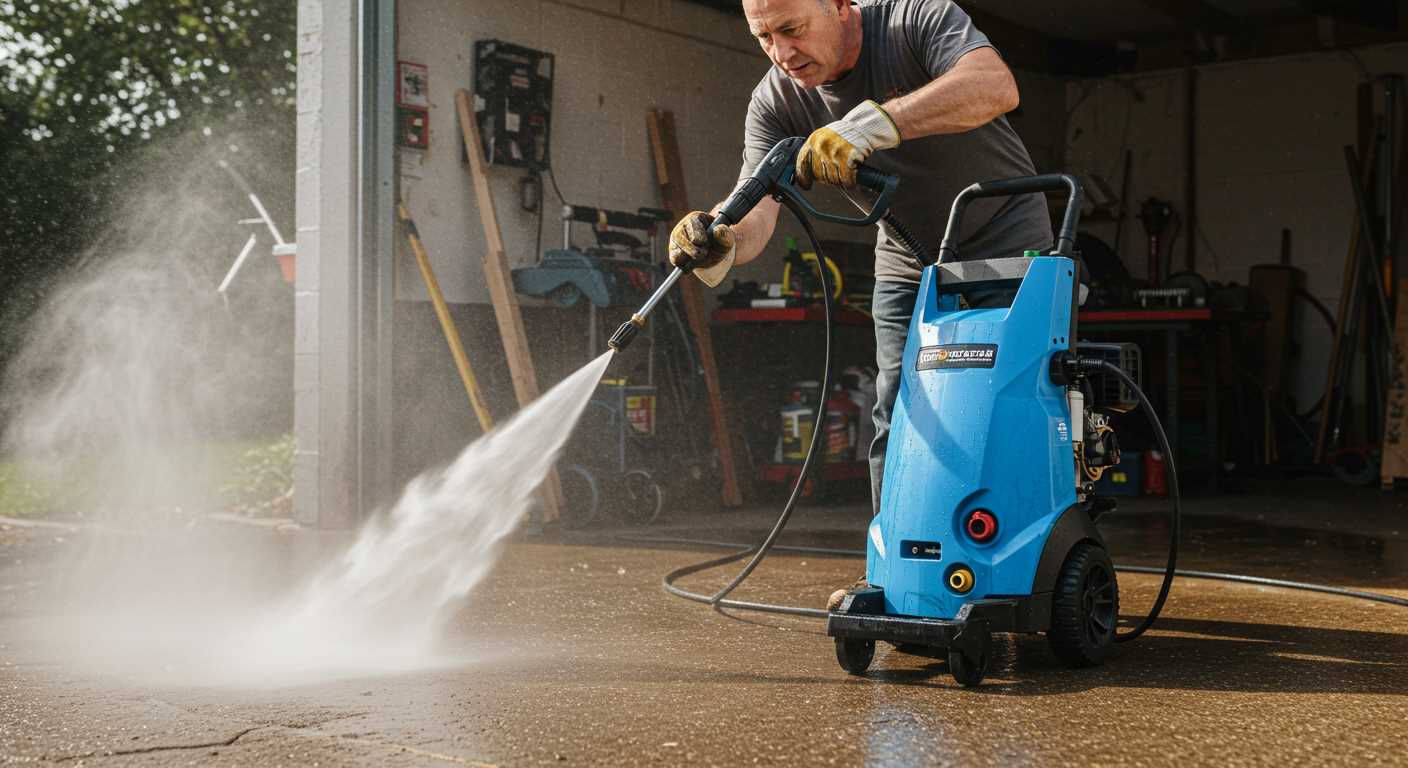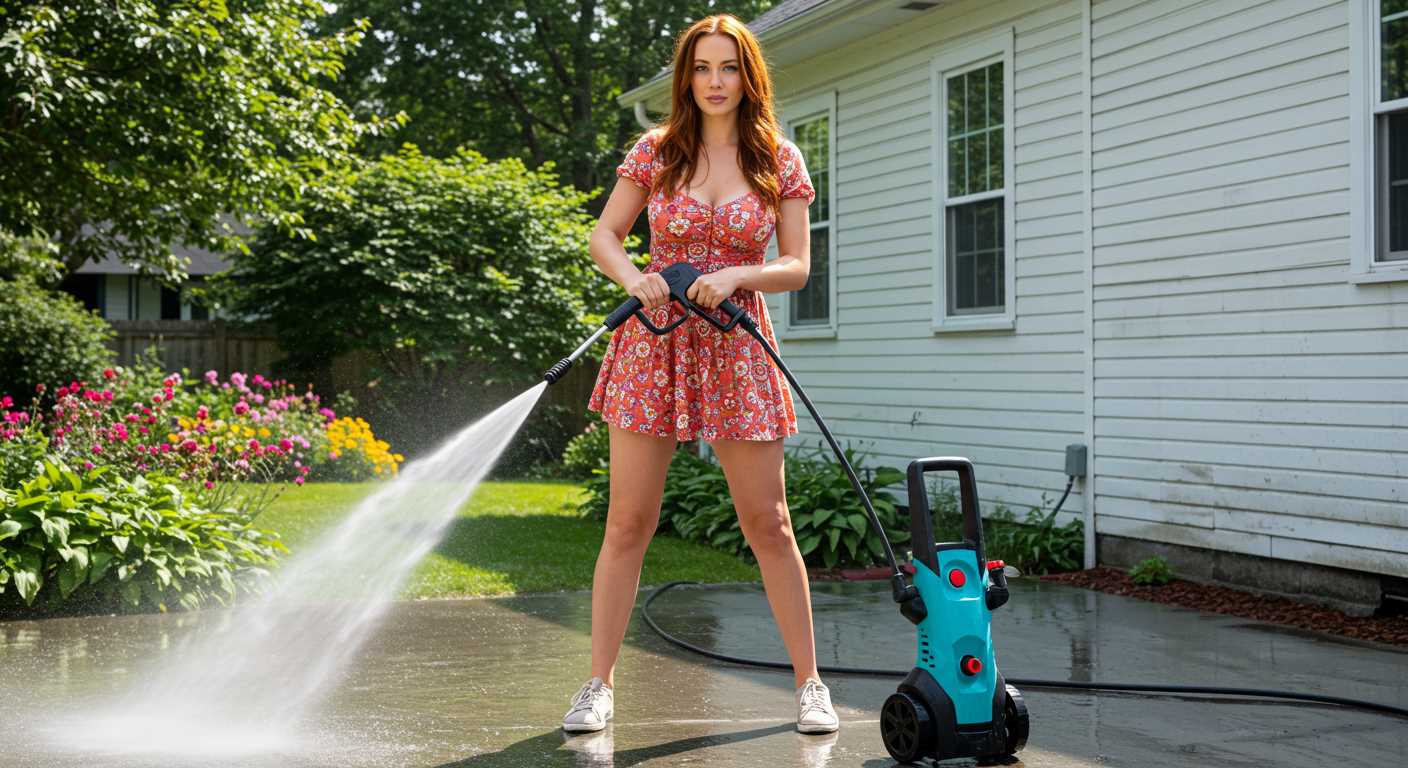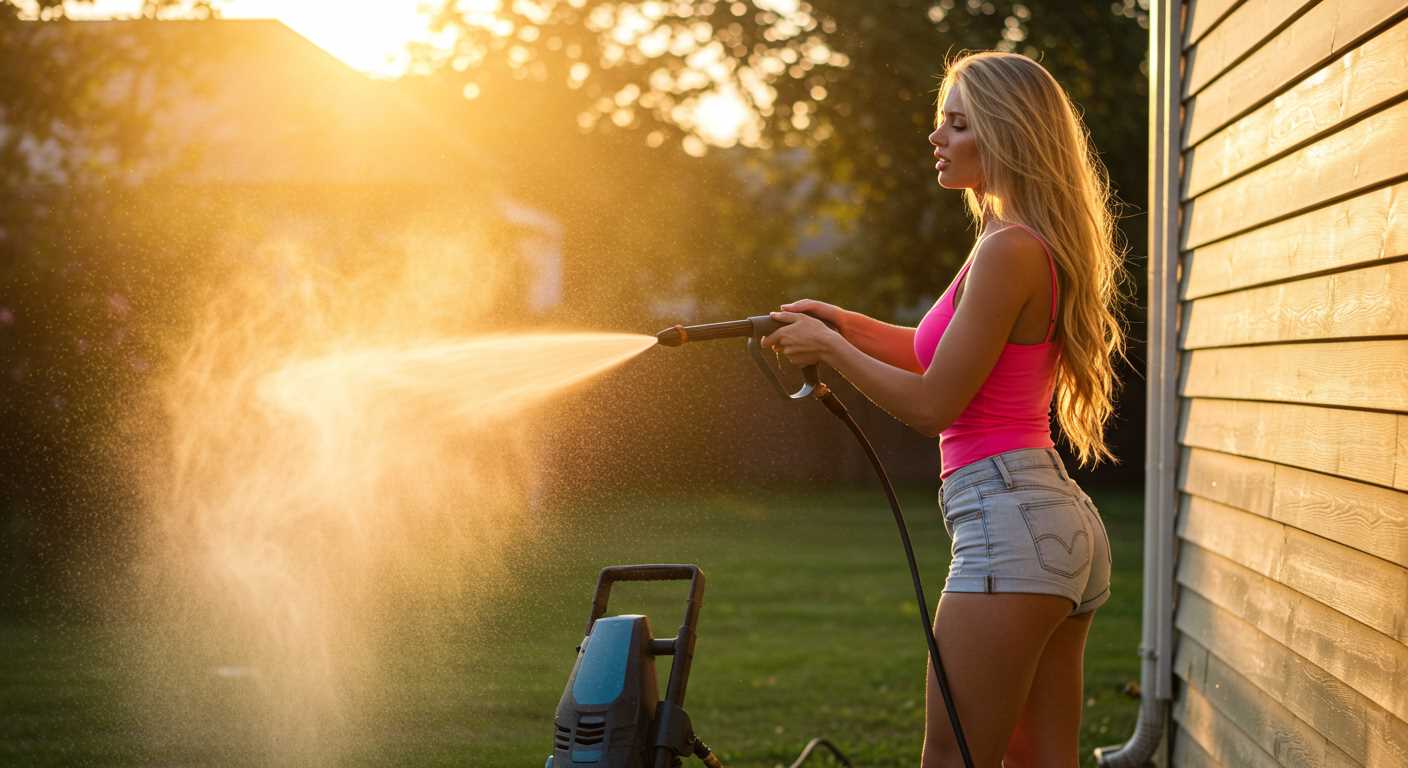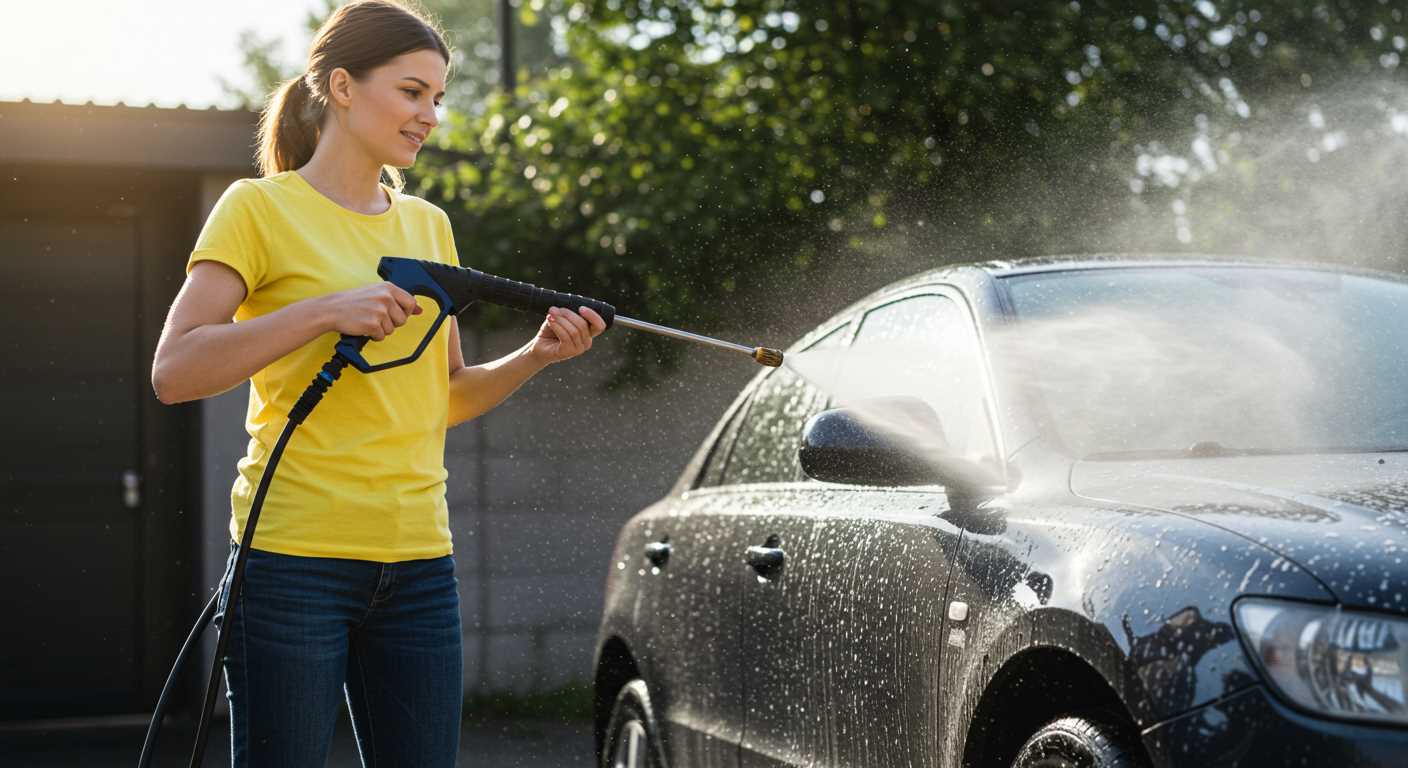



Among the range of models available, I recommend the Sun Joe SPX3000. This electric unit operates at a noise level of just 80 dB, making it one of the least disruptive options for residential use. Its powerful 14.5-amp motor delivers up to 2030 PSI, ensuring that you don’t sacrifice performance for a quieter experience.
Another excellent choice is the Greenworks GPW1501. This compact cleaner boasts a mere 70 dB, providing a serene environment while tackling dirt and grime. Weighing only 20 pounds, it is easy to manoeuvre, and its 1500 PSI rating still offers remarkable cleaning power for lighter tasks around your home.
If you’re looking for versatility, consider the Kärcher K5 Premium. Operating at approximately 84 dB, it strikes a balance between effective cleaning and lower decibel levels. Its water-cooled motor enhances efficiency, while the adjustable pressure settings allow for tailored cleaning setups for various surfaces.
In my experience, choosing a machine with a good balance of power and noise reduction features, such as rubberised feet and acoustic enclosures, can significantly enhance your cleaning experience without disturbing your surroundings. These models not only meet the essential criteria but also offer ease of use and storage, making them ideal for any household.
Key features to look for in a quiet cleaner tool

To identify a suitable low-noise cleaner, focus on the decibel rating. Ideally, models should operate below 80 dB, ensuring comfort during use. Another critical aspect is the type of motor. Brushless motors generally produce less noise and provide a longer lifespan compared to traditional variants.
Consider the pressure output too; a model with adjustable pressure settings can cater to various tasks without excessive noise levels. Look for options equipped with noise-dampening technology, which helps minimise disruptive sounds during operation.
Moreover, weight and portability play roles in ease of use. Lightweight models facilitate better handling and manoeuvrability, especially in residential areas sensitive to noise. An ergonomic design not only enhances comfort but also improves control, leading to quicker and quieter cleaning sessions.
Lastly, check for user reviews that specifically mention noise performance; firsthand experiences can provide insights into real-life operation parameters that specifications might not adequately portray.
Decibel levels: Understanding noise ratings
When evaluating noise levels, focus on models with a decibel (dB) rating under 80 dB for acceptable performance with minimal disturbance. Most electric models range between 60 dB and 75 dB, making them suitable for residential areas.
Decibel Rating Scale
Here’s a quick overview of common dB levels for context:
- Normal conversation: 60 dB
- Dishwasher: 50-70 dB
- Quiet office: 40-60 dB
- Heavy traffic: 70-85 dB
Understanding this scale allows for better comparison among different machines. For instance, a unit rated at 70 dB will sound notably quieter than one at 85 dB, though both can handle tough tasks.
Importance of Noise Ratings
Choosing equipment with lower dB ratings can significantly enhance comfort during use. High-output devices may boast superior cleaning power but can disrupt neighbours and create an uncomfortable work environment. Pay attention to the type of motor; brushless motors generally operate more quietly than brushed ones, enhancing user experience.
In summary, aim for devices rated below 80 dB to maintain peace while effectively accomplishing cleaning goals. This minor consideration leads to greater satisfaction and fewer noise-related complaints from those nearby.
Top quiet pressure washer models in 2023

One standout option for 2023 is the Sun Joe SPX3000. With its 14.5-amp motor, it produces a mere 80 dB. This model delivers an impressive 2030 PSI, perfect for tackling various cleaning tasks while maintaining a relatively low sound level. The 5 quick-connect nozzles enhance versatility, ensuring you can adapt to different surfaces effectively.
Another excellent choice is the Greenworks GPW1501. At a sound level of just 76 dB, this compact unit is particularly suited for residential use. It offers 1500 PSI and is lightweight, making it easy to manoeuvre. Its integrated soap applicator adds convenience for beginners looking to achieve optimal results quickly.
For those seeking a balance of power and noise reduction, the AR Blue Clean AR383 is worth considering. Operating at approximately 79 dB, it features a 1,900 PSI capability, ideal for various exterior cleaning purposes. Its robust plastic casing ensures durability, while the adjustable soap dispenser simplifies application processes.
If you’re after a more portable option, check out the Karcher K1700. It generates 77 dB and remains efficient with a maximum of 1700 PSI. Designed with storage and transport in mind, it includes onboard storage for nozzles and a 20-foot power cord, catering perfectly to smaller areas.
Lastly, the Ryobi RY141900 is another model you might find appealing. Operating at 80 dB, it boasts a 1900 PSI output. It comes with four quick-connect nozzles that provide different spray patterns, allowing precise cleaning for surfaces like decks and driveways.
In 2023, it’s clear there are multiple options to consider that deliver power without excessive noise. Each model mentioned here brings a unique set of features, making them suitable for varied cleaning needs while maintaining a quieter environment.
Comparing Electric vs Gas Models for Low Noise Levels
For those prioritising low noise during cleaning tasks, electric units stand out. They typically operate at decibel levels significantly lower than their gas counterparts, often ranging between 60 to 80 dB. Gas models, while powerful, can exceed 85 dB, making them less suitable for noise-sensitive environments.
Key factors to consider include:
- Motor Type: Brushless motors found in some electric variants are quieter and more efficient compared to traditional gas engines.
- Design Elements: Enclosed designs in electric models can further mitigate sound output.
- Usage Environment: Indoor tasks or residential areas with noise ordinances favour electric versions due to lower emissions and sound.
When it comes to versatility, gas machines are acclaimed for high-pressure outputs suitable for heavy-duty jobs. However, if noise reduction is paramount, opting for an electric model is advisable.
To make an informed choice, assess your specific cleaning needs against the noise levels generated by each type. Electric choices excel in residential settings, while gas options serve well for demanding outdoor tasks. Don’t overlook the importance of balancing power requirements with sound comfort for optimal user experience.
Noise Reduction Technologies in Pressure Washers
Advanced noise reduction technologies significantly enhance user experience while using cleaning machines. Two prominent approaches include electric motors with brushless designs and innovative pump mechanisms. Brushless motors generate less friction, resulting in quieter operation. These motors often last longer, reducing maintenance needs.
Additionally, sound insulation materials play a crucial role. High-quality acoustic foam and sound-dampening casings absorb vibrations and reduce noise emissions. Look for models that incorporate these materials for a quieter environment during usage.
Variable-speed controls are another feature worth considering. By allowing users to adjust the motor speed, manufacturers effectively minimise noise levels when full power isn’t required. This flexibility aids in preserving the surrounding tranquillity.
Another effective method is the use of pressure modulation technology. By automatically adjusting water pressure and flow based on the surface being cleaned, machines can operate quieter while still delivering satisfying results. Establishing this balance ensures efficient cleaning without excessive noise.
Choosing models equipped with these noise reduction techniques not only enhances comfort but also encourages more frequent usage without disturbing neighbours or household members. Keep these technologies in mind for selecting a unit that aligns with your needs for quiet operation.
Real user experiences with quiet washers
In my extensive experience with various cleaning machines, I’ve come across numerous user reviews that highlight the benefits of selecting a quieter model. Many consumers appreciate how these machines enable them to clean without drawing unnecessary attention or disturbing neighbours. For example, one user shared that they could wash their car early in the morning without waking up their entire household. This level of convenience is cited as a major selling point.
User testimonials
Another user explained how they transitioned from a traditional gas device to an electric variant. They mentioned the drastic difference in noise levels, stating they were able to enjoy their outdoor activities while maintaining their property. They particularly recommended electric models equipped with noise reduction technology for urban environments.
Common feedback themes
Several users noted that functionalities and ergonomic designs played significant roles in their satisfaction. They expressed appreciation for lightweight options that were easy to manoeuvre, even with lower noise emissions. A particular preference was evident for models featuring adjustable pressure settings, allowing users to control noise while ensuring effective cleaning. In discussions online, many highlighted how quiet operation does not equate to diminished cleaning power, debunking the myth that performance is directly proportional to noise output.
| User Satisfaction | Features Appreciated | Common Recommendations |
|---|---|---|
| High | Noise reduction technology | Electric over gas |
| Medium | Lightweight design | Adjustable pressure settings |
| High | Ergonomics | Versatile cleaning capabilities |
These experiences underline the idea that quiet machines can significantly enhance the cleaning process without the nuisance of loud operating sounds. Users are not only looking for performance but also a considerate approach to noise, enabling them to maintain their spaces with ease.
Best practices for minimising noise while using high-pressure cleaners

Choose models with lower decibel ratings and electric designs over gas-powered units, as they typically operate more quietly. A sound level under 85 dB is beneficial for reducing noise pollution.
Utilise a long extension cord to position the cleaner further from the area being serviced. This can significantly lessen the noise impact on yourself and surrounding environments.
Implement noise dampening mats beneath the equipment. These can absorb vibrations and sound, lowering overall noise levels during operation. Ensure the unit is placed on stable ground, as this can also reduce unnecessary rattling.
Regular maintenance plays a vital role. Cleaning filters and ensuring all components are in top condition can minimise mechanical noise that may develop over time due to wear and tear.
Employ appropriate nozzles for the task. A wider spray pattern might allow for effective cleaning at lower power use, thus producing less noise throughout usage.
Choose optimal times for cleaning, ideally during hours that align with local noise ordinances. Early mornings or late evenings should typically be avoided to respect neighbours and local regulations.
Finally, using personal protective equipment, such as earplugs, can make a significant difference in audio exposure, especially during longer cleaning sessions. Taking these steps can lead to a more pleasant and less disruptive cleaning experience.
Cost Considerations for Quiet Cleaning Equipment

Budgeting for low-noise models demands careful attention to upfront costs and long-term value. Entry-level devices with modest capabilities usually start around £100 to £200, while mid-range options can range from £200 to £500, offering enhanced features and performance. Premium variants, which significantly reduce noise, can exceed £500, depending on their construction and technology.
Electric units typically present a more economical choice than gas-powered alternatives since they involve lower maintenance costs and don’t require fuel purchases. However, gas machines can deliver greater power, justifying their higher price for users needing extensive cleaning. Assessing your specific cleaning needs against your budget is critical here.
Warranty terms also factor into overall expenditure. A robust warranty can signal product reliability and reduce future repair costs. Look for models offering at least a 2-year warranty to ensure peace of mind.
Consider accessories like pressure hoses and nozzles, which may increase the overall cost but enhance versatility. Investing in quality additional tools can yield benefits in performance and efficiency.
Electric power sources may incur ongoing electricity costs, yet these will likely be minimal compared to the savings from not purchasing gas. Finally, any long-term investment in quieter devices can also lead to savings from reduced noise ordinances, potentially avoiding fines or the need for additional soundproofing during operation.








